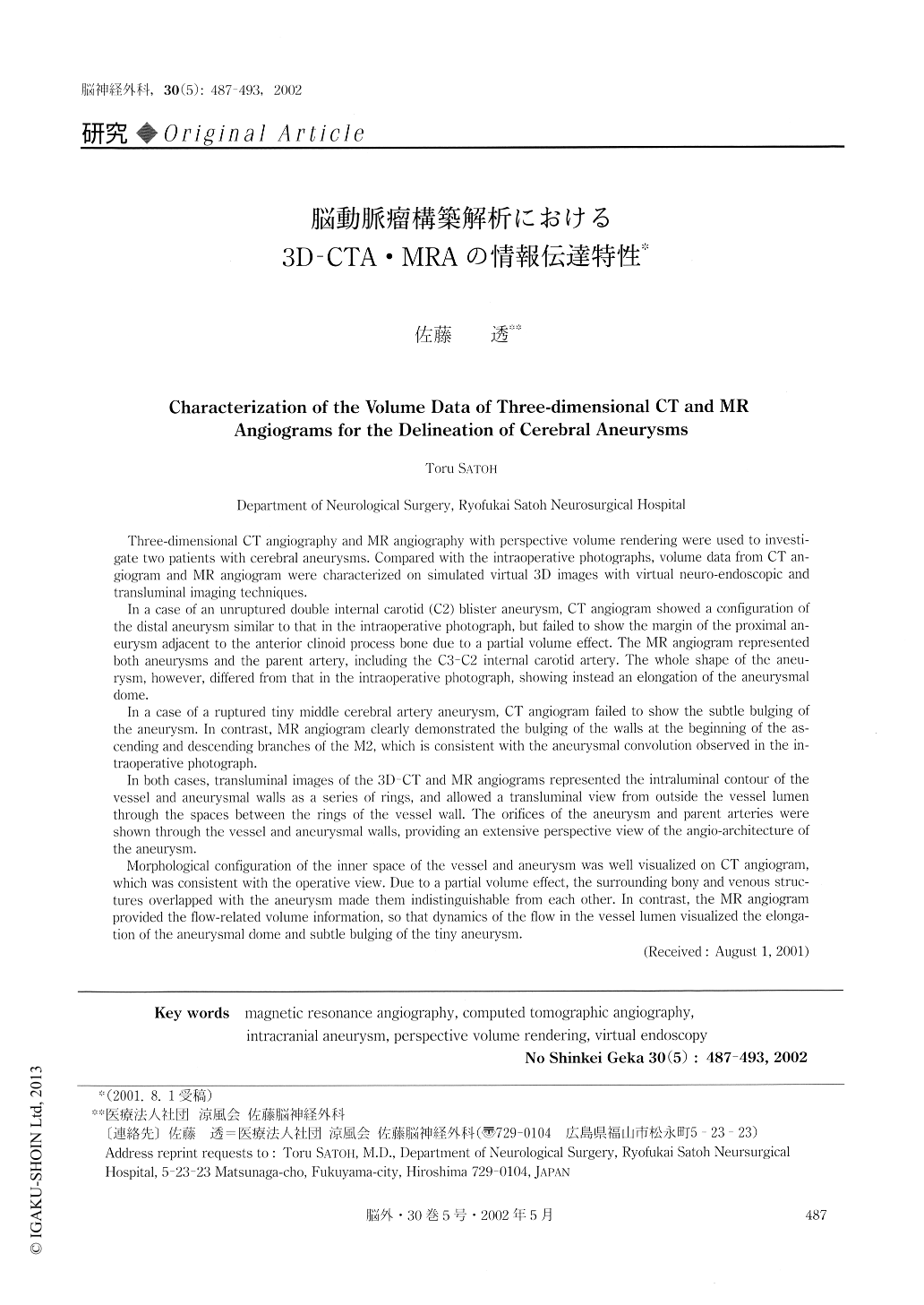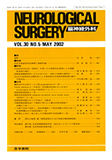Japanese
English
- 有料閲覧
- Abstract 文献概要
- 1ページ目 Look Inside
Ⅰ.はじめに
最近のCT・MRI装置や撮像技術など撮像系の進歩と,得られた生体内3次元構造の連続情報(volume data)のワークステーションにおけるcomputervisualization技術の革新により,3次元(three-di-mensional,3D)画像が急速に臨床応用され,特に脳動脈瘤の画像診断領域では目覚しい進展が認められる2-12,14,15).これまで,CT angiography(CTA)では,volume dataから脳血管構造の3D画像(3D-CTA)が標準的に作成されたため,maximum inten-sity projection画像による2次元表示が一般的であったMR angiography(MRA)に比べ,脳動脈瘤構築を立体的に把握するうえで,CTAは優越していた2,4,6,11,14).しかしながら,ワークステーションでのDI-COMデータ処理能力の向上と高速化により,MRAにおいてもCTAと同様な脳動脈瘤の3D-MRA画像が短時間で表示可能となってきた4,7-12).さらに,近年digital subtraction angiography(DSA)においても,回転DSAを行うことでvolume dataが取得可能となり,脳動脈瘤の3D-DSA画像が報告されつつある3,15).
Three-dimensional CT angiography and MR angiography with perspective volume rendering were used to investi-gate two patients with cerebral aneurysms. Compared with the intraoperative photographs, volume data from CT an-giogram and MR angiogram were characterized on simulated virtual 3D images with virtual neuro-endoscopic and transluminal imaging techniques.

Copyright © 2002, Igaku-Shoin Ltd. All rights reserved.


